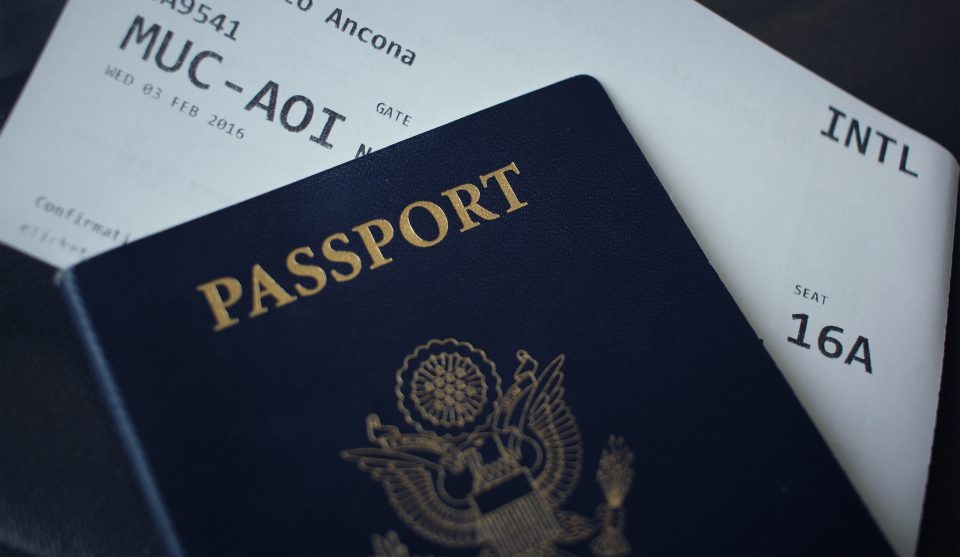
By Johnny Jet – For the past 20 years, Johnny Jet averaged 150,000 miles and 20 countries a year. He has been featured in many major publications and appeared on ABC, CBS, CNBC, CNN, FOX, MSNBC, NBC and PBS.
If you’re traveling abroad for the first time, you might not be aware of a few very important legal matters, especially if you’ve never had to deal with them before. As a US-based traveler, it’s critical to check whether or not you need a visa to enter the country you’re traveling to, as well as how much visas cost and how far in advance you need to apply for one.
Here’s a breakdown of a few of the most important visa regulations for travelers holding a US passport.
North America
US citizens enjoy visa-free tourist travel to Canada, Mexico, Central America, and most Caribbean islands. However, one exception is Cuba. In order to travel to Cuba, you must obtain a license from the US Department of Treasury or enter Cuba for reasons other than tourism. For example, family visits and journalistic visits are permitted.
South America
For the most part, US citizens enjoy visa-free tourist travel to South America for at least 90 days. However, there are a few exceptions. Visitors to Bolivia must pay $160 USD on arrival for a 10-year visa. Visitors to Paraguay may obtain a 10-year visa on arrival if arriving at the airport.
Elsewhere, a visa must be obtained in advance. Visitors to Brazil are able to apply for an eVisa, but a visa waiver program is scheduled to become effective on June 17, 2019. Visas are also required for travel to Venezuela.
Europe
As of the date of publication, US citizens enjoy visa-free travel to most European nations. However, beginning January 1, 2021, US citizens who plan on traveling to Europe’s Schengen Zone will need to register with the European Travel Information and Authorization System, or ETIAS for short. If travelers fail to do so, they will not be able to enter the country.
Don’t let this discourage you though. The processing fee for this online form is only €7. It should only take a few hours for the application to be approved and will be valid for three years or until your passport expires, whichever comes first. Children under 18 will also need to register with ETIAS but will not have to pay the application fee.
In general, tourist travel is permitted in Europe for a total of 90 days within a 180 day period for each zone of travel. But, this gets complicated because Europe is divided into several different zones. The Schengen Area is a union of 26 European states that enjoy the benefit of free movement and travel across borders. This applies to travelers as well. You will not cross a border check when transiting between these countries, but it is always a good idea to hold onto your passport in case temporary customs and border checks are set up at your chosen crossing.
But here’s where a lot of people mess up: you are only allowed a total of 90 days of travel total within a 180 day rolling period in the Schengen Area. For example, Norway and Germany are both Schengen countries. If you would like to spend a few months traveling those two nations, then you would need to figure out how to split those 90 days between them. If you’ve already spent 90 days in Norway, then you would not be able to legally cross into Germany.
But since there are no borders between Norway and Germany, how would anybody know? Once you decide to leave the Schengen zone, you have to get stamped out of Schengen. If you’ve overstayed your Schengen allowance, you’re in for some problems at the border. For example, if you spent 90 days in Norway and then spent some more time in Germany, you could face steep fines or even serious legal action and a ban depending on your situation.
If you need to reset your Schengen allowance but don’t want to leave Europe, you can take at least a 90-day stay in a non-Schengen area such as Ireland or the U.K.
Asia
Asia can get pretty complicated for US citizens as it’s a massive continent with no real beneficial unions between countries, as far as borders are concerned. Even the small nations of southeast Asia have their own visa requirements. The key is to stay organized and plan in advance.
For the simplest cases, US citizens can travel visa-free to Thailand, Japan, South Korea, Mongolia, Kazakhstan, Kyrgyzstan, Israel, Malaysia, Georgia, Armenia, Philippines, Taiwan, Hong Kong, Macau, Brunei and Indonesia.
Visas on arrival or eVisas are required for Vietnam, Laos, Cambodia, Myanmar, India, Bangladesh, Nepal, Uzbekistan, Turkey, Azerbaijan, Oman, Jordan and the UAE.
Bhutan requires a stiff $250 per day visa fee, so make sure to budget for that. You will also need to be proactive about applying for your visa in advance for travel to Russia, China, Iraq, Iran, Afghanistan, Pakistan, Saudi Arabia, Syria, Turkmenistan and Yemen. In many cases, you will need to prove that your trip is being organized by an official tour group. Otherwise, your visa application will probably be denied.
Africa
For the most part, expect to need a visa to travel in Africa. Most of southeastern and northwestern Africa, as well as Egypt, offer visa-free travel or visas on arrival (i.e., Uganda, Morocco, South Africa, etc.). However, the majority of Saharan and central-African nations will require a visa in advance as well as proof of vaccinations for yellow fever and/or typhoid.
Oceania
Oceania is pretty easy for US citizens to visit. An eVisa is available for Australia, you may obtain a visa on arrival for Papua New Guinea, and you may enter New Zealand visa-free using SmartGate. Most of the Pacific Islands are just as accessible.
Still not sure if you need a visa? Check the US Department of State for specific information about your destination.

